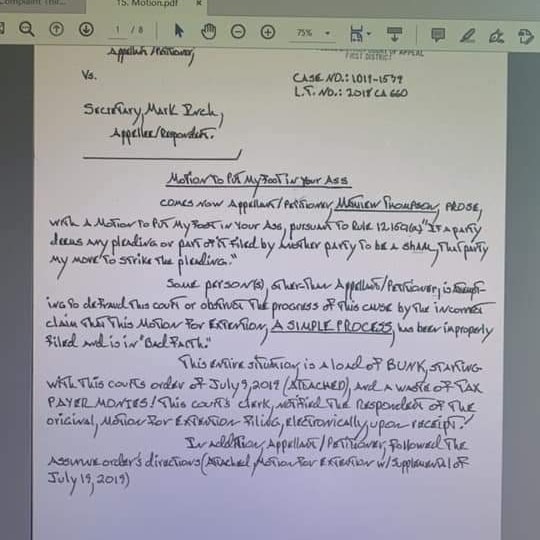In an uncanny coincidence of timing, two new services have come along in the past month to deliver free legal and litigation news derived in large part from court dockets.
Legal Radar, slated for release tomorrow, comes from legal and business news company ALM, the publisher of Law.com, The American Lawyer, Corporate Counsel, and other legal publications. The other, Law Street Media, was launched Jan. 15 and comes from the legal research and publishing company Fastcase.
Legal Radar and Law Street Media are free legal news services, and both are heavily focused on delivering litigation-related news derived from court dockets.
Both will use artificial intelligence and analytics to help automate and customize news delivery.
(And when it comes to full disclosure, I’ve got a bucketful for this story: I am on Law Street Media’s advisory board. Law Street Media will be using some content from LexBlog.com, where I am editor-in-chief. And I am a long-ago former employee of ALM.)
Legal Radar
Slated to launch on Feb. 25, Legal Radar will deliver news drawn from PACER — the federal courts’ electronic docket system — as well as news from the Law.com network. It will include updates on new lawsuits and filings in federal courts, federal litigation trends, breaking news, and other legal news reported by ALM journalists.
As I report in more detail at my LawSites blog, ALM says the service will be ideal for business litigators as well as for attorneys who want to keep up with industry and practice-area trends, get alerts for news involving clients or other firms, and cut through information overload.
The service will include news extracted from PACER as well as the full-text source documents. A story about a new litigation filing, for example, will include a link to the full complaint.
Legal Radar’s summaries of PACER news will be generated algorithmically, rather than by human editors. Although editors will not review each summary, they will quality-check the summaries’ overall accuracy.
A key feature will be customization, allowing each user to create a custom news feed, Vanessa Blum, ALM director of newsroom innovation, told me during a demonstration of the product. New users will be guided through a series of choices to select the news the user wants to track. Options include:
- Industries, including aerospace, AI and automation, biotech, cannabis, education, entertainment, fintech, government, health care, renewable energy, and technology.
- Practice areas, including antitrust, consumer protection, employment, intellectual property, product liability, securities, and trade secrets.
- Companies, from the U.S. and globally, spanning the Fortune 500, major global companies, and emerging fast-growth startups.
- Law firms, including the Am Law 200, NLJ 500, elite plaintiffs’ firms, the largest global law firms, and alternative legal services providers.
- Regional news covering all 50 states as well as some global regions.
The service is designed to be optimized for use on mobile devices, but can also be used on computer desktops. It will include the option to receive push notifications, either in the app or browser, for updates involving specific companies or law firms.
The service will be offered for free in both the desktop and mobile versions. For some articles, clicking through to the full text may take the user to ALM publications that require a paid subscription.
Law Street Media
Similar to Legal Radar, Law Street Media is a legal news service whose goal is to enable readers to track legal news by industries, companies, law firms, and litigation.
To do this, it leverages both case law from the Fastcase legal research platform, and docket information and analytics from Docket Alarm, the docket search platform owned by Fastcase.
So far, Law Street Media covers just one industry, high tech. But it plans eventually to cover 10 core industries, with food and agriculture slated for June. After that will come health and medical in October 2020, followed by hospitality, logistics, and travel in December 2020. Slated for 2021 are manufacturing and retail, entertainment and communications, energy and environment, legal, and then finance, insurance, and banking.
Users can read the news at the Law Street Media website or subscribe to a daily update.
Whereas Legal Radar’s articles are both journalist-written and algorithmically generated, Law Street relies on a small staff of in-house writers, led by Editor-in-Chief David Nayer, a lawyer who formerly worked as a reference attorney at Fastcase.
Nayer describes his mission as delivering news that leads to business for the site’s readers. “News leading to business could be as simple as tracking emerging litigation, but today, with docket alerts and analytics, it extends to tracking a growing company’s litigation docket, or the law firms that represent those companies,” he said.
Many of Law Street’s articles link to the underlying source documents, including judicial opinions, statutes, regulations, docket sheets, and pleadings, all of which can be viewed for free.
A feature Nayer expects to add soon is the Docket Alarm Alerts Center. This will allow users, when reading a story, to easily create docket alerts for the parties or firms mentioned in the story. By clicking on the name of a party in Law Street, the user will launch a search in Docket Alarm, from which the user can set up an alert. Use of this feature will require a Docket Alarm subscription.
Targeted for June is the launch of a premium subscription level for Law Street Media. This will offer pre-alerts of litigation news, before articles are written; analytics articles about judges, firms, and companies; and access to a new Emerging Litigation Journal.
It will also include access to what Law Street is calling “pop-ups” — which it describes as hyper-focused alerts devoted to emerging areas of litigation, such as litigation around vaping, drones, or data privacy.
The Law Street that launched last month was a phoenix arising from the ashes of an earlier incarnation, founded by journalist John Jenkins in 2013 as a news site for Millennials. After the site went dormant, Fastcase acquired it in 2018 with the goal of retooling and relaunching it. As Fastcase CEO Ed Walters told me at the time, he viewed expanding into legal news as consistent with Fastcase’s mission to become as robust a legal research platform as LexisNexis or Westlaw.
“We’re knocking the legs out from under the chair of things people get LexisNexis for,” he said. “Legal news is definitely one of them.”
At a time when trusted options for legal news grow increasingly rare, both of these new services should be welcome additions for legal professionals. While particularly suited to litigators, they should be useful to any legal professional who wants to track news of practice areas, industries, firms and companies.
 Robert Ambrogi is a Massachusetts lawyer and journalist who has been covering legal technology and the web for more than 20 years, primarily through his blog LawSites.com. Former editor-in-chief of several legal newspapers, he is a fellow of the College of Law Practice Management and an inaugural Fastcase 50 honoree. He can be reached by email at ambrogi@gmail.com, and you can follow him on Twitter (@BobAmbrogi).
Robert Ambrogi is a Massachusetts lawyer and journalist who has been covering legal technology and the web for more than 20 years, primarily through his blog LawSites.com. Former editor-in-chief of several legal newspapers, he is a fellow of the College of Law Practice Management and an inaugural Fastcase 50 honoree. He can be reached by email at ambrogi@gmail.com, and you can follow him on Twitter (@BobAmbrogi).










 Kathryn Rubino is a Senior Editor at Above the Law, and host of
Kathryn Rubino is a Senior Editor at Above the Law, and host of 







